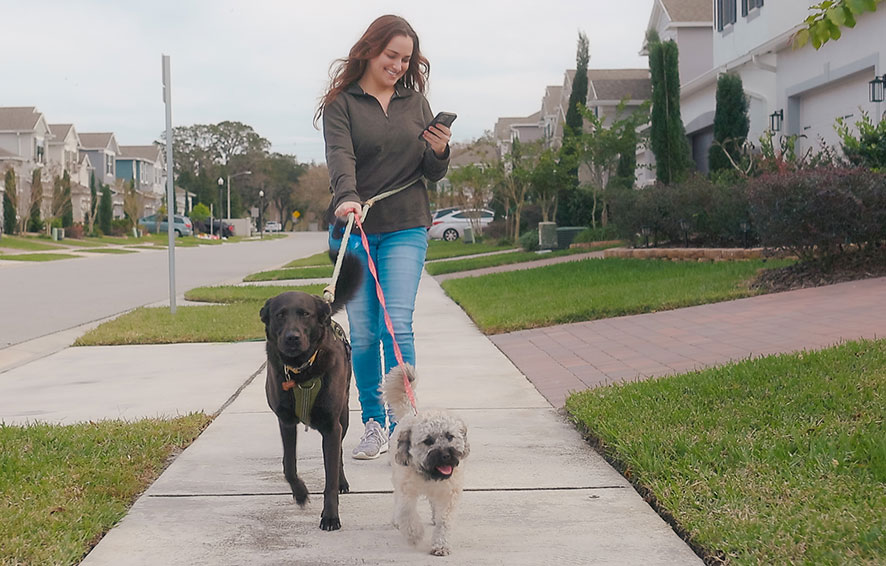Key Takeaways
- Pet-friendly workplaces have become one of the top perks that employees want.
- Many companies are trying to accommodate dogs at work since studies show they make people happy, help employees with stress, and facilitate social interactions.
- Creating a pet-friendly workplace takes planning, good communication and consideration for those uncomfortable with animals.
Table of Contents
Working from home during the pandemic enabled many people to become first-time pet parents and allowed all pet parents to enjoy more time with their pets. Many probably got used to working with their cat sitting on their lap or their dog nuzzling them for a midday walk.
Now that most people are back in offices, at least part of the time, employers are looking at ways to make the workplace more appealing. One of the most popular perks is offering dog-friendly offices. Welcoming cats is far less common, but some employers may allow it. Surveys suggest that an increasing number of employees plan their workday routines and their career decisions with their pets in mind, says the Society for Human Resource Management (SHRM). According to a Live Career poll, 52% of respondents said that pet-friendly benefits and policies are important when considering an employer.
Benefits of a dog-friendly office
Perhaps CEOs have seen research showing that having dogs at work is great for morale, helps alleviate stress, and smooths the way for co-workers to socialize. It might even mean employees are willing to work longer if they don’t have to rush home to feed or walk their pets.
Business News Weekly recently listed the top 20 dog-friendly companies—those that make it easy to bring a dog to work and prioritize their happiness. Most of the top companies were pet-related or tech, with Amazon coming out on top. Amazon has 8,000 employee dogs registered as part of its “Woof Pack.”
The company’s furry-positive culture gets high marks from employees, who say it makes them happier and more productive and nudges them to go for a walk once or twice a day.
“I love being able to bring my dog to the office. The alternative is to have her home alone for more hours than I would be comfortable with, or finding a dog sitter, which is very inconvenient. All of my colleagues have been very welcoming of my dog at work—the culture is very dog-friendly,” said one software engineer.
Before you begin creating a dog-friendly office space
Of course, just opening the doors to workers’ pets will not be a successful approach. Creating a pet-friendly culture requires some adjustments to the workspace and clear communication with employees to alleviate conflict.
Gauge feasibility and interest
The first step in creating a dog-friendly workplace is gauging your employees’ interests. Conduct a survey or meet to discuss the idea and collect feedback. It’s also crucial to consider the feasibility of such a policy in your workplace environment, considering space, safety, and any potential allergies or fears among employees. If you move forward, consider forming an employee office pet committee to monitor how it’s going and suggest adjustments.
Create a pet policy
To avoid conflicts between pets or between pets and office mates, be sure to have a pet policy in place that everyone has read. Have employees fill out and sign an application with basic information about their dog that confirms they understand the office rules and that they will be responsible for their dog’s behavior. The application will also designate a “buddy”—someone who will watch and be responsible for the dog—should the dog parent need to go to a dog-free zone.
A pet policy can address expectations and consequences for possible scenarios. It would be best if you also had a plan for dealing with any issues or conflicts that may arise. When writing your policy, consider:
- Minimum age for pets allowed at work
- Maximum number of dogs one employee can bring
- How many days a week can an employee bring a pet
- Maximum number of dogs allowed each day in the office
- Are they required to be potty-trained?
- Vaccination, flea/tick preventive and hygiene requirements
- Tolerance level for barking, indoor accidents, chewing/damage to property
- Consequences for undesirable behaviors
- Considerations for those who are fearful of dogs or have allergies
Make office changes
First, if you are in leased offices, you must check and see if the landlord allows pets. Once the decision is made to welcome pets, a few adjustments should be made to the physical space.
Here are some questions to ask:
- Are there areas that must stay off-limits for pets?
- Do you need separate work areas for people who don’t like dogs or are allergic?
- Will you have a designated outdoor space? If not, will there be a pet relief area?
- Where will you place water bowls, toys and treats?
- Is the flooring you have now the best for pets?
You may need to replace carpeting for a floor surface that makes it easier to clean up accidents. Consider adding spaces for pets to play, amenities such as dog treats, water bowls, poop bags and signage to remind employees of the rules. Amazon goes a step further and has a dedicated outdoor dog park where pups and workers can romp. Be sure that any emergency plans account for getting pets out safely.
Roll out gradually
Introducing pets to the workplace should be a gradual process. Start with a trial period where pets are allowed on certain days. This will help you identify any potential issues and adjust as necessary. During this period, closely monitor how pets and their pet parents adapt to the new environment and how it affects overall workplace productivity and morale. Regular feedback sessions can help you tweak your pet policy as needed and ensure it continues to meet the needs of all employees.
Offer other pet perks
To really ingratiate your pet-loving employees, consider other pet perks such as:
- Time off to grieve a lost pet
- Time off to adopt a pet
- Pet-friendly company events
- Discounted pet insurance
- Discounts to other pet services such as doggy daycare or pet supplies
Celebrate successes
Remember to celebrate the positive changes a dog-friendly policy brings to your workplace. Sharing success stories and benefits can help maintain support for the policy. Develop an online space for workers to share photos and stories about their pets. For example, Amazon has an internal Slack channel called Amazon Puppers Chat, where employees post pictures of their dogs.
Conclusion
Creating a dog-friendly workplace is a meaningful way to show employees that their well-being is valued. By following these steps and continually refining your approach based on real-world experience, you can create a welcoming environment for humans and canines alike.











